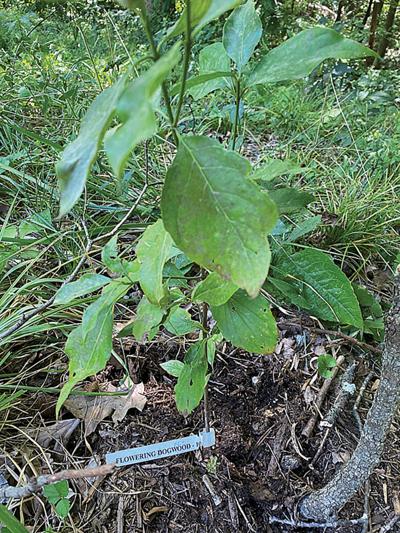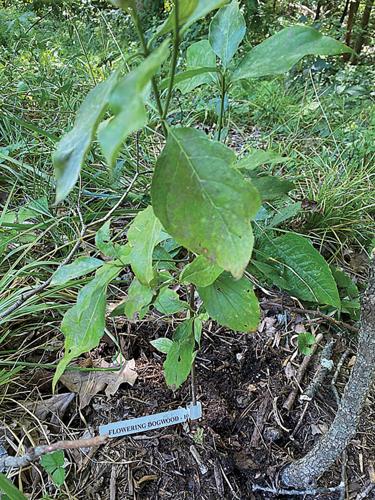My latest copy of the Missouri Conservationist arrived with the annual seedling order form from the George O. White State Forest Nursery inserted inside. The mini-catalog is included each year with the September edition of the state Department of Conservation magazine.
Last year I set an alarm for myself, and on Sept. 1, placed my order for flowering dogwood trees. The official state tree is always one of the first to be sold out, so I was lucky to get 10 of them shipped to me in April. This year they are going to be even harder to come by. By noon on the first day, eight of the 61 species of trees and plants – including the flowering dogwood – were already listed as sold-out on the webpage order form.
According to a short story in the back of the booklet, a wet autumn restricted the annual planting at the nursery in 2022. Because most of the tree species require moisture and cold to trigger germination, not having seeds in the ground through the winter complicated the chances for success. As an experiment, nursery staff put seeds for 40 of the trees into coolers for stratification and storage.
“This had never been tried before, but we had great success in all but four species: flowering dogwood, wild plum, blackgum and black cherry,” the article stated. “The black cherry didn’t germinate at all, and we will have limited supplies of the other three species.”
Coincidentally the trees I ordered and planted this spring were flowering dogwoods and wild plums. In addition to their relative scarcity, the dogwoods come with an upfront warning on the order form. “The survival of this small-to-medium shade tree is very low.”
Like the nursery’s cooler experiment, I feel pretty good about my little dogwoods. They arrived on the UPS truck as bare-root little twigs. I put them into the ground along our tree edge where an old dogwood tree had been broken off the previous summer.
The tiny sticks stood barely a foot tall above the potting soil, peat moss, and mulch beds I made for them. I was happy to see nine of the 10 trees make little leaves within the first few weeks. Throughout the summer I carried water (occasionally mixed with Miracle-Gro) to them regularly, but even that measure of TLC left only six survivors heading into this fall. How well they handle the winter will be their next big test.
The big-box stores and other tree sellers can provide a variety of different dogwood hybrids and color options, but there is something special about knowing that mine came from Missouri native seeds, started and nurtured as they were originally created.
The wild plum trees I planted look as hardy as weeds. They made it through the year on the same watering schedule and had the same soil mix head start, but I am much more confident that their noticeable growth and 10-for-10 first year is a sign they will deliver on the seedling order form’s promise of a small thicket of color and nutrition for the birds, bees and others.
“One of the first trees to bloom in the spring, (the wild plum) produces a bright red edible fruit and provides excellent food and cover for wildlife.”
The Conservationist is delivered for free to state residents who request it. Many Leader readers likely have a copy of the latest edition, with a picture of a robin splashing in a puddle on the cover. Inside, beyond the many other great photographs and information, the seedling order form and instructions await.
Like most of the department’s publications, the seedling order form is filled with the kind of images that will have you saying: “I want to grow a button bush.” “Those American beautyberries look delicious.”
Even though some may not be available or in limited supply, now is the time to place your order for trees to grow next year.
John Winkelman has been writing about outdoors news and issues in Jefferson County for more than 30 years and is the Associate Editor for Outdoor Guide Magazine. If you have story ideas for the Leader outdoor news page, e-mail ogmjohnw@aol.com, and you can find more outdoor news and updates at johnjwink.com.





